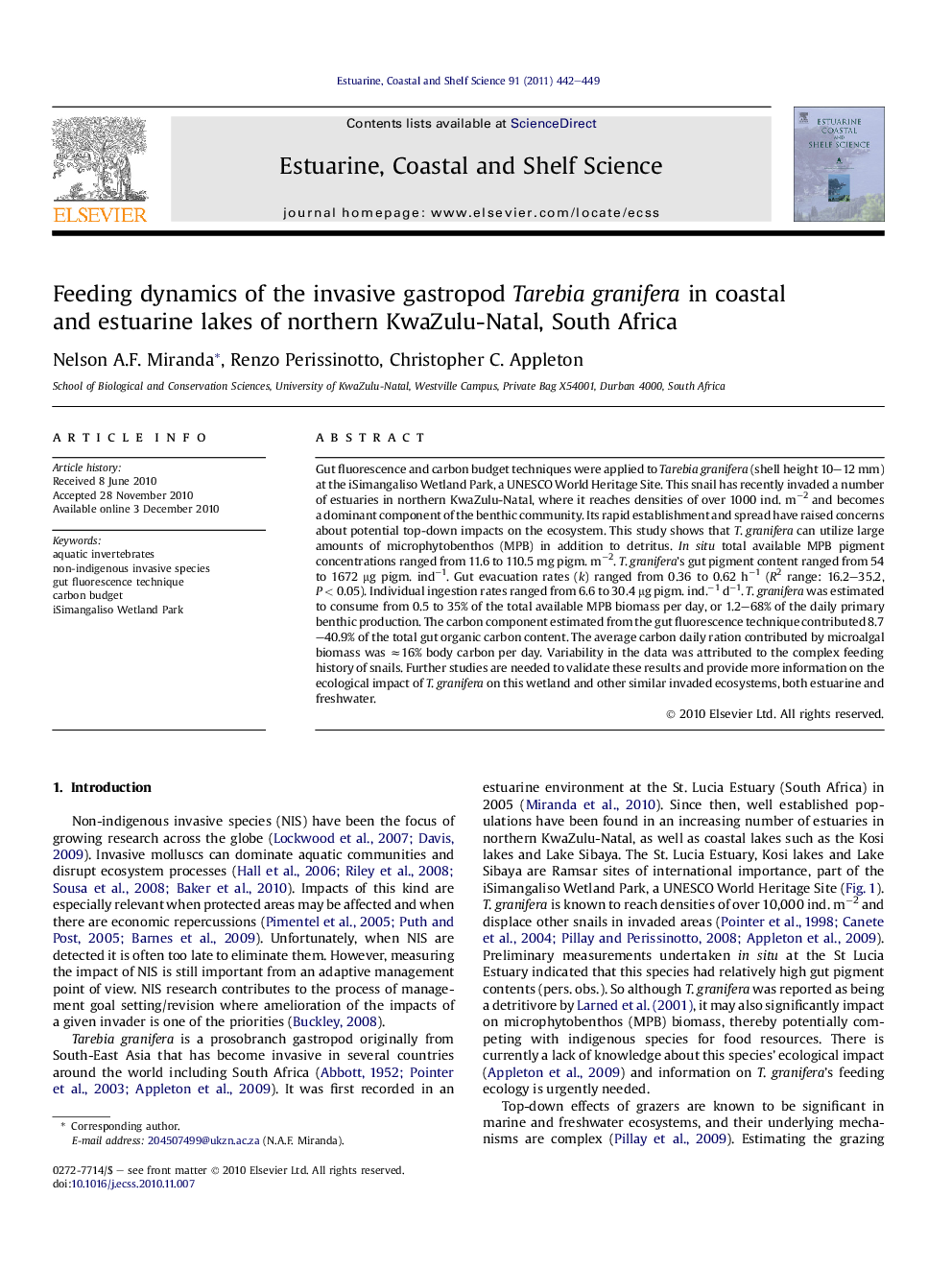| Article ID | Journal | Published Year | Pages | File Type |
|---|---|---|---|---|
| 4540638 | Estuarine, Coastal and Shelf Science | 2011 | 8 Pages |
Gut fluorescence and carbon budget techniques were applied to Tarebia granifera (shell height 10–12 mm) at the iSimangaliso Wetland Park, a UNESCO World Heritage Site. This snail has recently invaded a number of estuaries in northern KwaZulu-Natal, where it reaches densities of over 1000 ind. m−2 and becomes a dominant component of the benthic community. Its rapid establishment and spread have raised concerns about potential top-down impacts on the ecosystem. This study shows that T. granifera can utilize large amounts of microphytobenthos (MPB) in addition to detritus. In situ total available MPB pigment concentrations ranged from 11.6 to 110.5 mg pigm. m−2. T. granifera’s gut pigment content ranged from 54 to 1672 μg pigm. ind−1. Gut evacuation rates (k) ranged from 0.36 to 0.62 h−1 (R2 range: 16.2–35.2, P < 0.05). Individual ingestion rates ranged from 6.6 to 30.4 μg pigm. ind.−1 d−1. T. granifera was estimated to consume from 0.5 to 35% of the total available MPB biomass per day, or 1.2–68% of the daily primary benthic production. The carbon component estimated from the gut fluorescence technique contributed 8.7–40.9% of the total gut organic carbon content. The average carbon daily ration contributed by microalgal biomass was ≈16% body carbon per day. Variability in the data was attributed to the complex feeding history of snails. Further studies are needed to validate these results and provide more information on the ecological impact of T. granifera on this wetland and other similar invaded ecosystems, both estuarine and freshwater.
Research highlights► Gut fluorescence and carbon budget techniques were applied to a benthic invertebrate. ► This in situ approach provided critical insight into the diet of an invasive species. ► T. granifera's feeding rate is comparable with other invasive gastropods in the world. ► T. granifera has significant top-down effects on freshwater and estuarine ecosystems.
